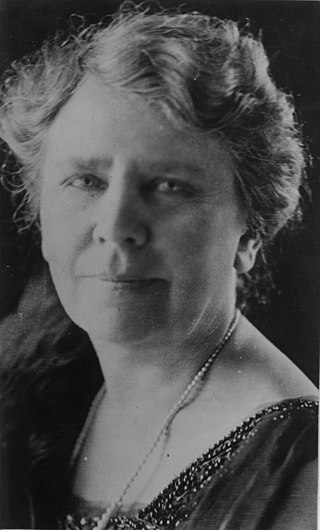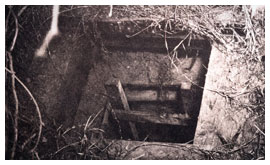
Phaseolus acutifolius, also known as the tepary bean, is a legume native to the southwestern United States and Mexico and has been grown there by the native peoples since pre-Columbian times. It is more drought-resistant than the common bean and is grown in desert and semi-desert conditions from Arizona through Mexico to Costa Rica. The water requirements are low. The crop will grow in areas where annual rainfall is less than 400 mm (16 in).

Alexandros Papagos was a Greek army officer who led the Hellenic Army in World War II and the later stages of the subsequent Greek Civil War. The only Greek career officer to rise to the rank of Field Marshal, Papagos became the first Chief of the Hellenic National Defence General Staff from 1950 until his resignation the following year. He then entered politics, founding the nationalist Greek Rally party and becoming the country's Prime Minister after his victory in the 1952 elections. His premiership was shaped by the Cold War and the aftermath of the Greek Civil War, and was defined by several key events, including Greece becoming a member of NATO; U.S. military bases being allowed on Greek territory and the formation of a powerful and vehemently anti-communist security apparatus. Papagos' tenure also saw the start of the Greek economic miracle, and rising tensions with Britain and Turkey during the Cyprus Emergency over the Cyprus issue.

Papago Park is a municipal park of the cities of Phoenix and Tempe, Arizona, United States. It has been designated as a Phoenix Point of Pride. It includes Hunt's Tomb, which is listed on the National Register of Historic Places.

Frances Theresa Densmore was an American anthropologist and ethnographer from Minnesota. Densmore studied Native American music and culture, and in modern terms, she may be described as an ethnomusicologist.
Ofelia Zepeda is a Tohono O'odham poet and intellectual. She is Regents' Professor of Tohono O'odham language and linguistics and Director of the American Indian Language Development Institute (AILDI) at The University of Arizona. Zepeda is the editor for Sun Tracks, a series of books that focuses on the work of Native American artists and writers, published by the University of Arizona Press.
Camp Papago Park was a prisoner of war (POW) facility located in Papago Park in the eastern part of Phoenix, Arizona, United States. It consisted of five compounds, four for enlisted men and one for officers. The property now is divided between the Papago Park Military Reservation, belonging to the Arizona National Guard, a city park, residential neighborhoods and a car dealer's lot.

USS Papago (ATF-160) was an Abnaki-class fleet ocean tug built for the United States Navy during World War II, and named for the American Indian tribe of the Piman family that formerly lived south and southeast of the Gila River in Arizona and the Mexican state of Sonora.

The Great Papago Escape was the largest Axis prisoner-of-war escape to occur from an American facility during World War II. On the night of December 23, 1944, twenty-five Germans tunneled out of Camp Papago Park, near Phoenix, Arizona, and fled into the surrounding desert.
Achi was a small, permanent village on the Tohono Oʼodham Reservation, in Pima County, Arizona United States. It has an estimated elevation of 1,759 feet (536 m) above sea level. As of 2019, there appeared to no longer be any residents or buildings in the village, thus classifying it as a ghost town. The site is approximately one mile northeast of the CDP limits of Santa Rosa. The name "Achi" derives from the Papago word for "ridge."
Ali Oidak or Alioitak is a populated place located in the Gu Achi District of the Papago Indian Reservation in Pima County, Arizona, United States. It has an estimated elevation of 1,824 feet (556 m) above sea level. The place name means "little field" in the O'odham or Papago language. A 1969 study of Papago communities lists it as a village with a single field well, supporting six houses.
Eulithosia papago is a species of moth in the family Noctuidae. It was first described by William Barnes in 1907 and it is found in North America.
Aradus behrensi is a species of flat bug in the family Aradidae. It is found in North America.

Nyctelius nyctelius, known generally as the violet-banded skipper or nyctelius skipper, is a species of grass skipper in the butterfly family Hesperiidae. It is found in Central America, North America, and South America.
Aneurus borealis is a species of flat bug in the family Aradidae. It is found in North America.
Mexoleon is a genus of antlions in the family Myrmeleontidae. There are at least two described species in Mexoleon.

Chimarra is a genus of little black caddisflies in the family Philopotamidae. There are more than 630 described species in Chimarra.
Aradus intectus is a species of flat bug in the family Aradidae. It is found in North America.
Clematodes is a genus of North American short-horned grasshoppers in the family Acrididae. There are two described species in Clematodes.
Clematodes vanduzeei, the papago creosotebush grasshopper, is a species of short-horned grasshopper in the family Acrididae. It is found in North America.
Scymnus papago, is a species of beetle found in the family Coccinellidae discovered by Thomas Lincoln Casey Jr. in 1899. It is found in North America and Canada.








